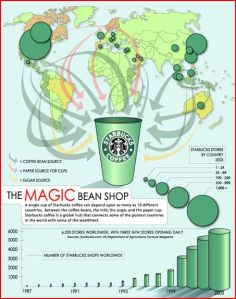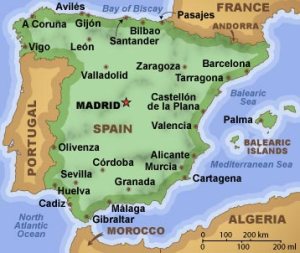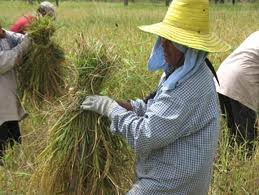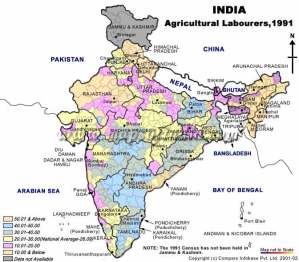Jacob Standafer
Services
It’s a lot of work to come out with a product that will appeal to consumers, but also have a significant profit from sales and total consumption. It takes even more work to take this product, maintain a chain of services, and distribute your product globally. The coffee chain of Starbucks is an idealized corporation that is growing rapidly, and will continue growing based upon their methods of distribution to their consumers. This paper will touch on how Starbucks’ methods are genius in how they cut cost not only for their business, but also their consumers around the globe.
Why is Starbucks so smart, and how did they come to create such a successful market? Let’s first start with the coffee process. The regular distribution of Coffee starts with a famer. The famer then hands his crop to a collector, collector to miller, miller o h exporter, and then finally the importer bring in the coffee. Once the importer has control, the coffee is then sold to various producers or roasters. Although many coffee chains take this route, Starbucks had something different in mind. Starbucks had the genius idea that they would only receive their coffee from one person, and that was the farmer. As long as Starbucks remained in good relations with the famer, they significantly cut ties with the middle expenses. Starbucks method of going straight to the supplier is an extremely smart decision; I believe the majority of Starbuck’s revenue is attained through their multi-channel system. Starbuck’s multi-channel system allows them to use more than one distribution method to their consumers. Their initial channel of distribution is importing heir coffee, processing in their own stores, and selling it with their brand name. However, Starbucks also distributes to grocery stores, Markets, and various other places that will have their service in another place of business. Another example of their genius ideal distribution is having their coffee readily available on airlines and in hotels.
Even though they portray a very powerful corporation, it doesn’t mean Starbucks has not had bumps along the way. In 2008 a man by the name of Gibbons was elected as Starbuck’s new senior vice president. The chain prices that year had rose 75 million dollars more than the year before. With his new position, Gibbons decided he would research why chain prices were rising significantly for that year. A significant reason for why this inflation was occurring came from the fact that half of Starbuck’s product were arriving on time. Gibbons stated, “”My quick diagnosis was … that we were not spending enough attention on how good we were at delivering service to stores.” It was soon discovered that there were too many outlays when distributing their product globally. Outsourcing Starbuck’s product gave the company much of its revenue, but also caused hug inflation prices.
( Vice President Gibbons)
It’s not every day you strike gold by attaining power of an extremely large company that generates millions daily by sales. However if I were one of these lucky one in a billions, I would look to Starbucks. They have amazing distribution methods and have learned from mistakes in the past. All the while Starbucks is increasing their outsource market for consumers, and they are smart about how their money is being spent and where it is going.
Works Cited
- http://thesocietypages.org/socimages/2009/06/26/the-global-distribution-of-starbucks-and-mcdonalds/
- http://media.glassdoor.com/sqll/2202/starbucks-squarelogo.png
- “It’s Not Just Coffee, It’s Starbucks.” : Starbucks’ Distribution Channel. N.p., n.d. Web. 01 Dec. 2013.
- “From Bean to Cup: How Starbucks Transformed Its Supply Chain.” – Procurement – CSCMP’s Supply Chain Quarterly. N.p., n.d. Web. 02 Dec. 2013.
- http://news.mattel.com/Executives/Peter-Gibbons-Executive-Vice-President-Global-Operations-15a.aspx
Editors:
Ellie Strandguist
Jason Miller
Araeli Garcia
Oren Paisner











